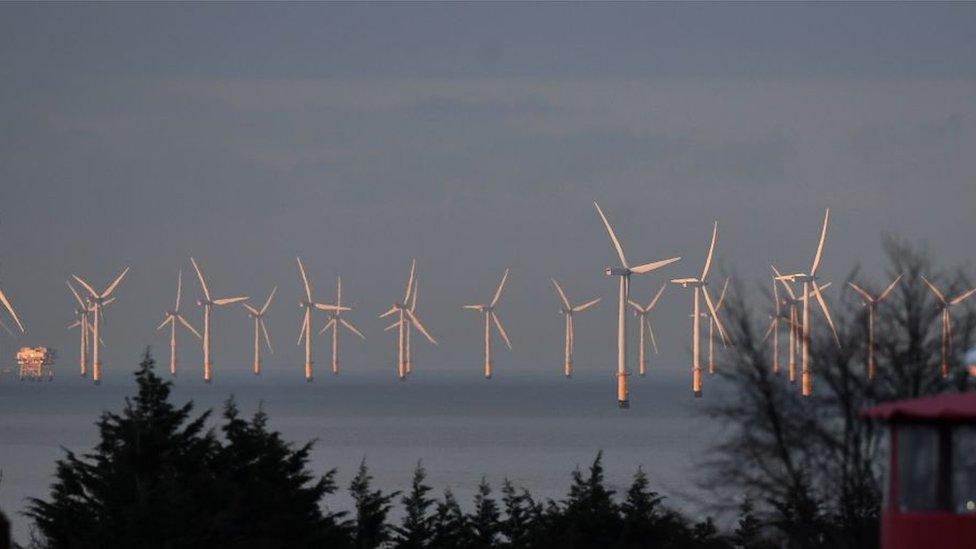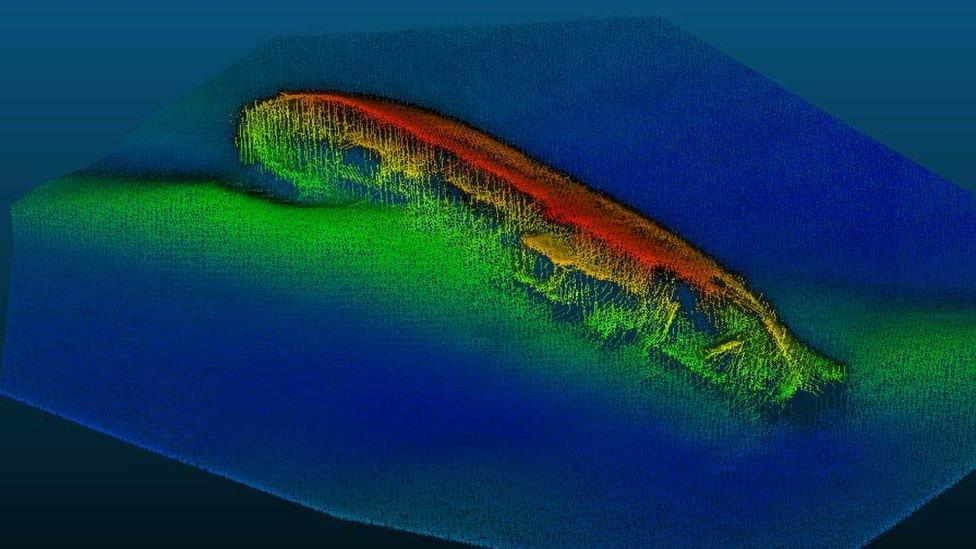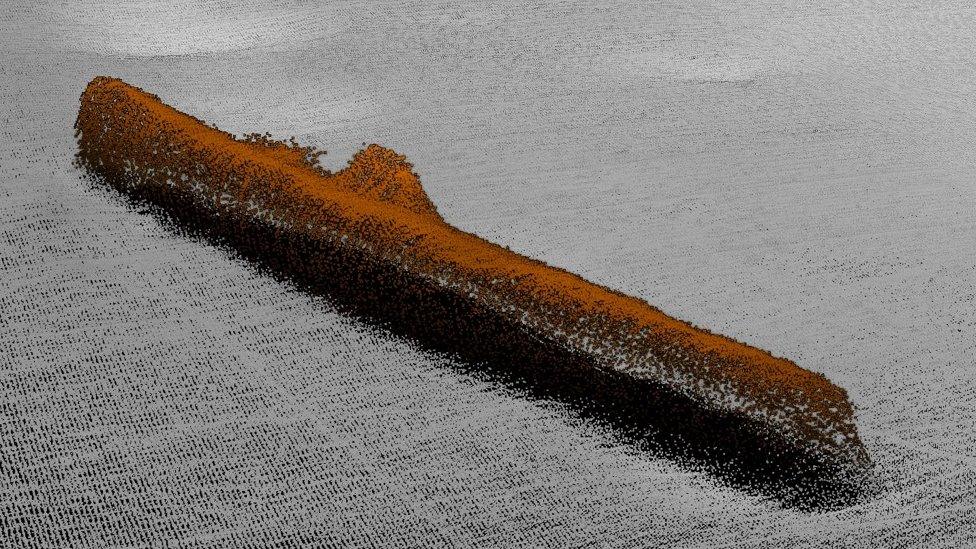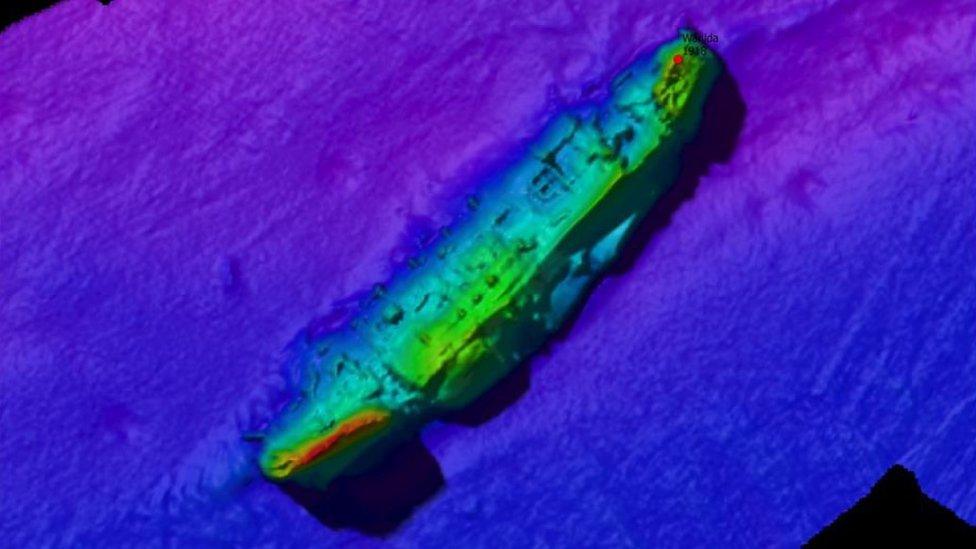Climate change: How World War One shipwrecks help renewable energy
- Published

Could the scanning of the seabed lead to more offshore energy projects like Gwynt y Mor?
A study mapping hundreds of shipwrecks around the Welsh coast is crucial for the development of green energy, a university scientist has said.
Sonar is being used to survey ships which sank during World War One, but green projects are benefitting from data about tides and the seabed.
Bangor University's Dr Mike Roberts said the coast had "unique" qualities for marine energy.
Renewable UK said it was "incredibly important" for offshore energy.
Using multi-beam sonar on a research vessel called the Prince Madog, the team has surveyed more than 300 shipwrecks in the Irish Sea, with many of those being sunk in World War One.
"While these wartime relics can provide valuable information to historians and archaeologists, they may also help lead to the birth of a new industry," Dr Roberts said.
"The data we're collecting is providing unique insights into how these wrecks influence physical and biological processes in the marine environment.
"Every one has its own story."

The Amlwch Rose sunk in 1940, killing 10, and is just north of the offshore wind site Gwynt y Mor off the north Wales coast
By looking at the wrecks, scientists can assess how structures have been affected by being in water for the past 100 years.
Energy that can be generated at sea - such as offshore wind, tidal, wave, tidal ranges and turbines - "needs an understanding" of the seabed, Dr Roberts said.
The research has already been used for two projects - Morlais marine energy, a tidal stream energy scheme off the coast of Anglesey and a wave energy project south of Pembrokeshire, where construction on a test site is set to begin in 2020.

The SS Dalewood, which was sunk off the coast of Holyhead in 1918, is shorter than scientists expected
Dr Roberts said: "The ambition in Wales is to generate energy from the sea. It's a unique place to do it because not everywhere has got strong currents, big waves or tidal surges, but you get all of that in Wales.
"If you're going to put lots of machines on the seabed we need to know the impact on the seabed. It could sink or get buried in sediment.
"We're hoping to inform them through research about the seabed - what ships are there and the most stable places to do this."
Rhys Jones, head of Renewable UK Cymru, said: "This sort of thing is incredibly important because offshore wind is clearly going to make an increasing contribution to both Wales and the UK renewable energy generating capacity over the coming decades.
"There's the potential for the development to go out into deeper water because of the increasing capabilities of the turbines themselves, so technology like this has a real part to play in the future of offshore wind development."
- Published26 September 2019

- Published7 October 2018

- Published24 October 2018
